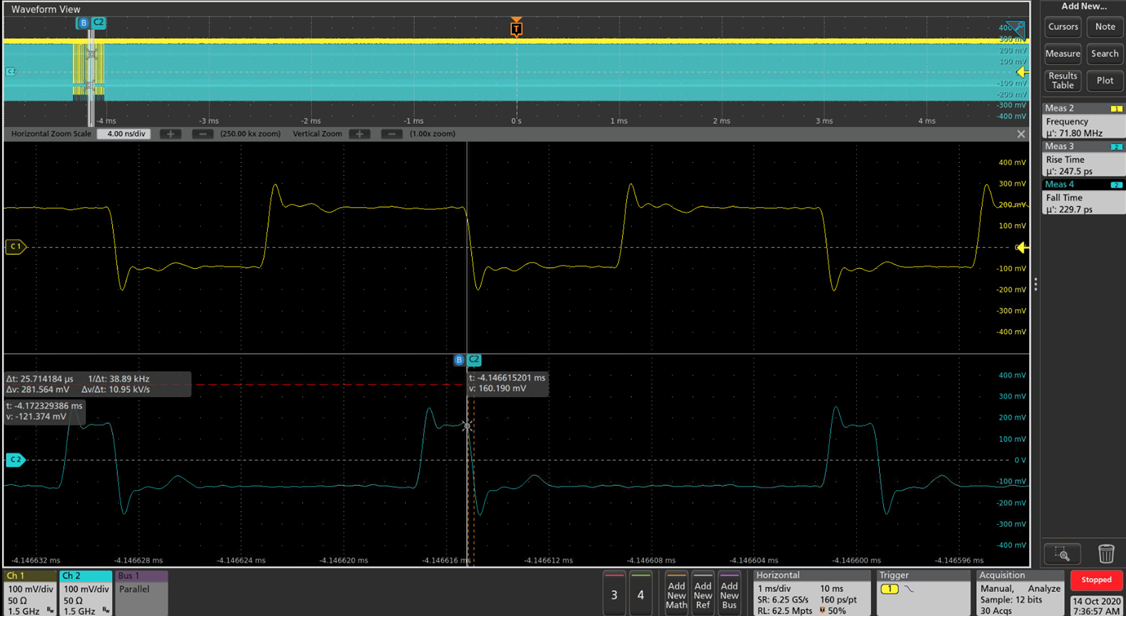Other Parts Discussed in Thread: SN65DSI84, LMK61E0M
Hello,
We have the following configuration:
MIPI DSI => DS90UB941 => 1 single ended FPD link => DS90UB948 => LVDS screen (800x1200 at 60 fps)
PCLK = 72MHz
When using an external clock for the serialiser (DS90UB941), what is the timing tolerance in terms of pixel clock on the LVDS ?
I did some measurements and i have the following (in Pixel clock):
Horizontal Front Porch / Horizontal Sync / Horizontal back porch / data
56 / 24 / 24 / 799 = 903
55 / 24 / 24 / 800 = 903
58 / 24 / 23 / 800 = 905
When doing the same measurement with the MIPI clock of the DS90UB941, i have stable timing, in line with our MIPI configuration:
72 / 24 / 24 / 800 = 920
Why do we have different timing on the Front porch, and why the timing are not stable with the external clock ?
Is it the retiming between the MIPI clock and the external clock domain ?
Is it possible to improve it ?
We also have the same behavior (screen flickering) with the SN65DSI84 (MIPI to LVDS bridge).
Thanks,
Best regards,
Alexandre


